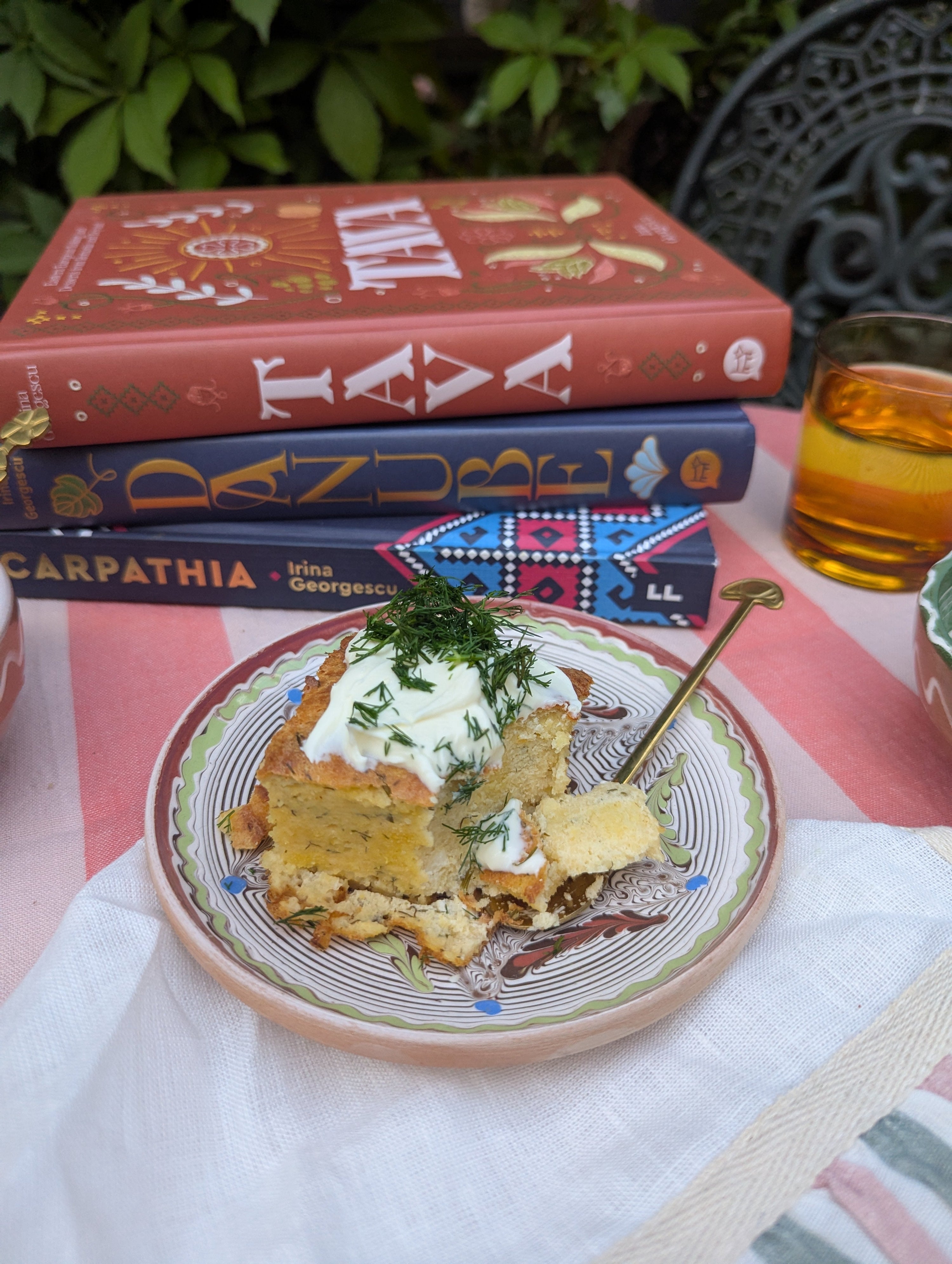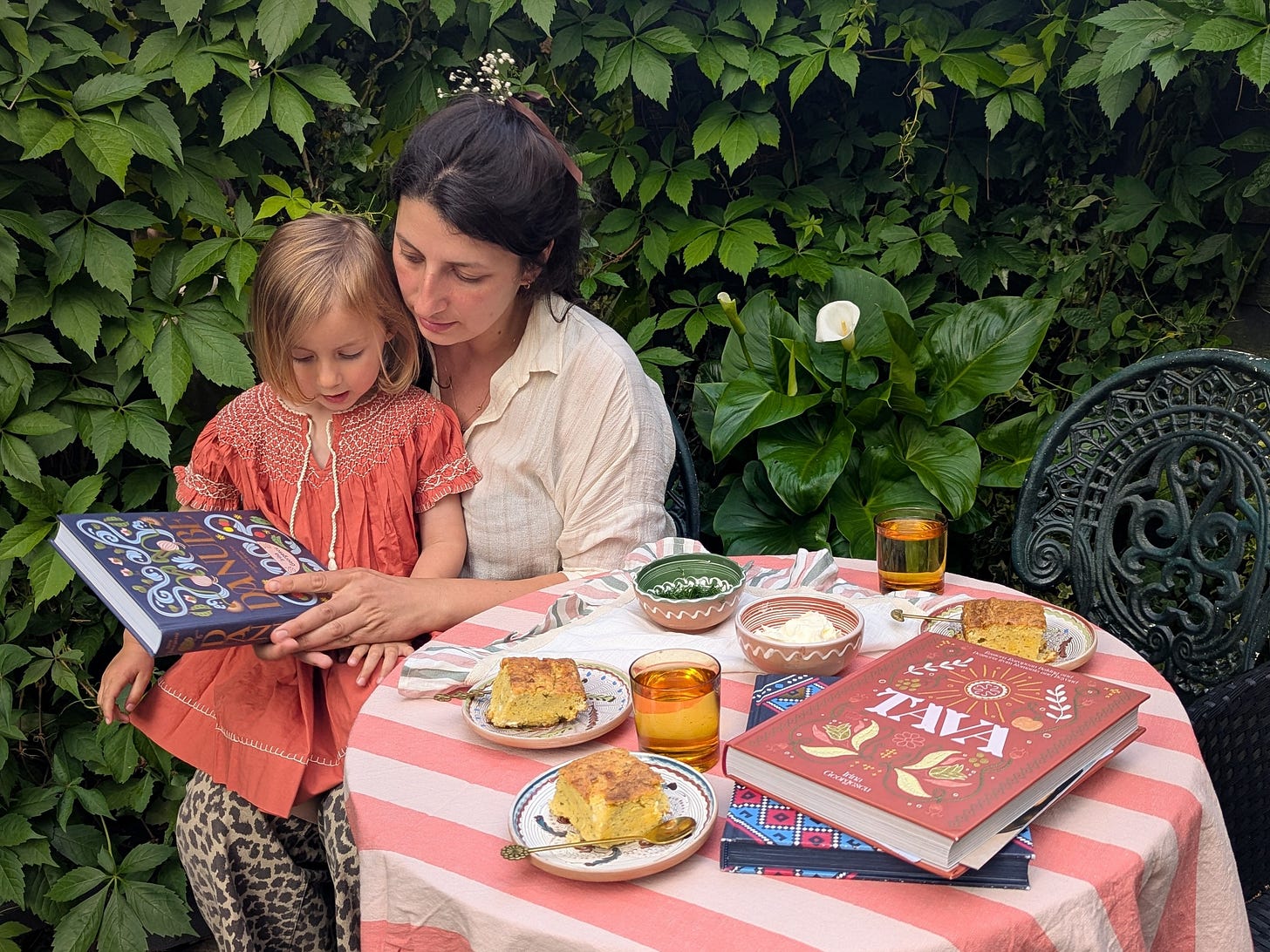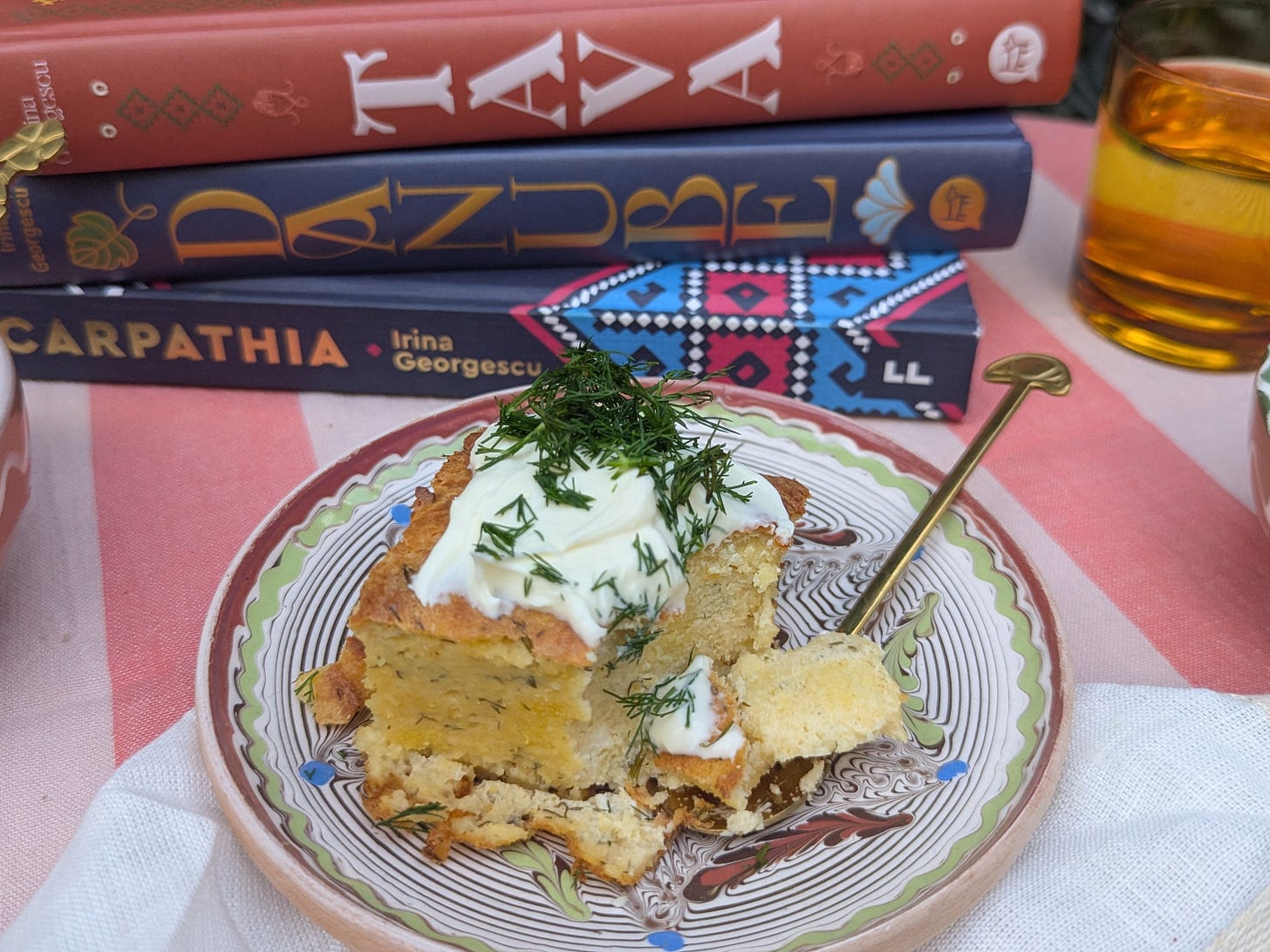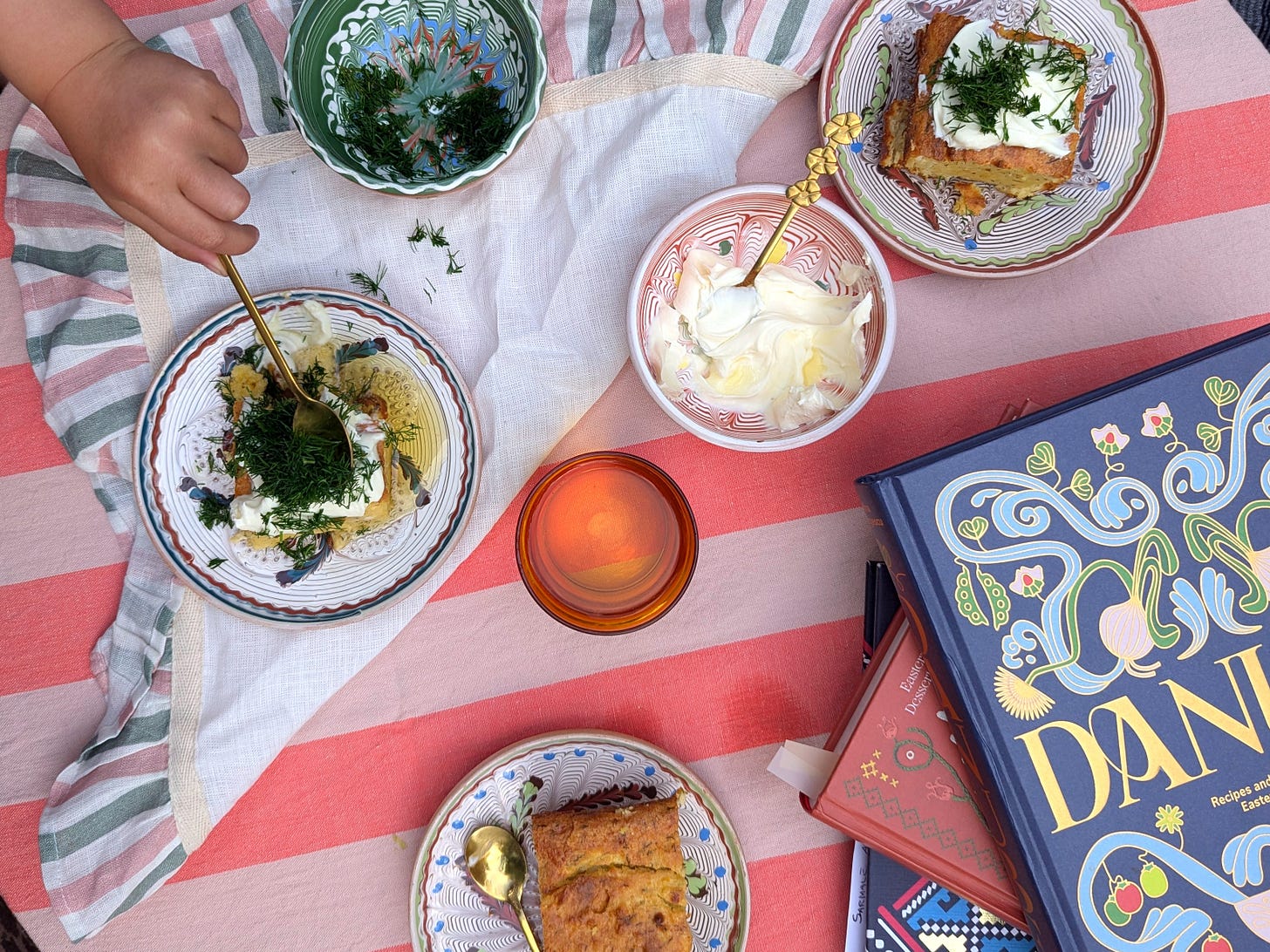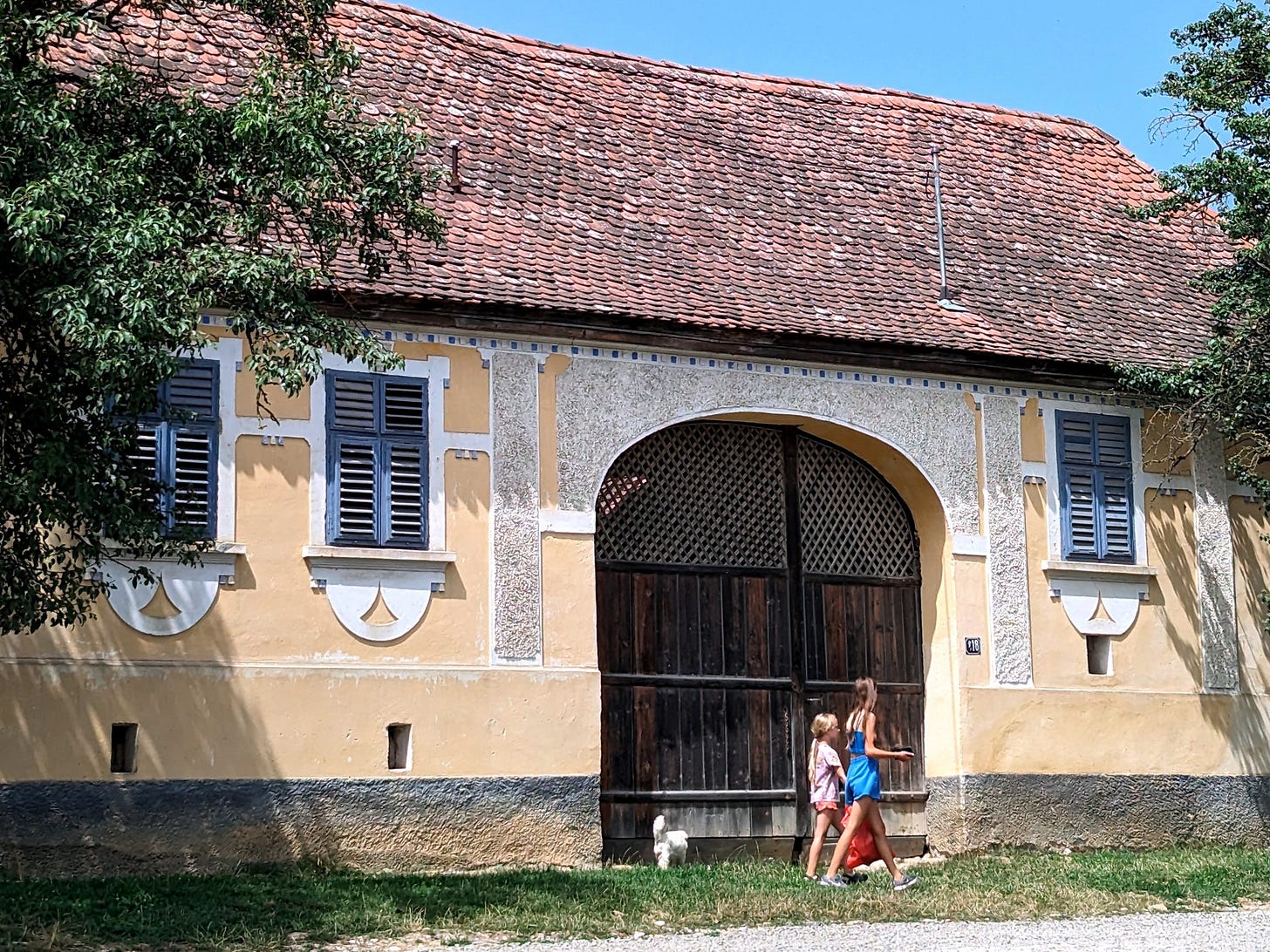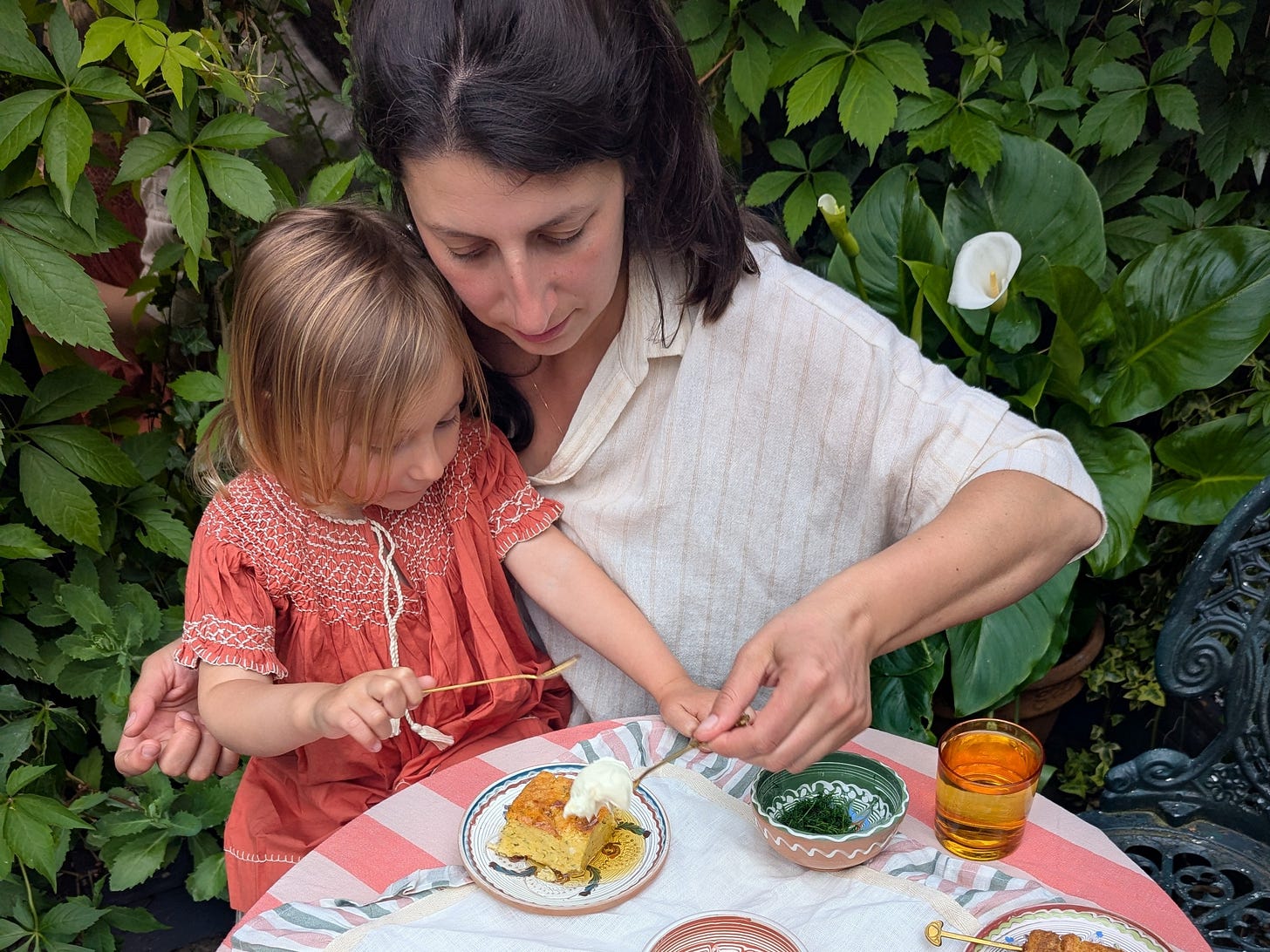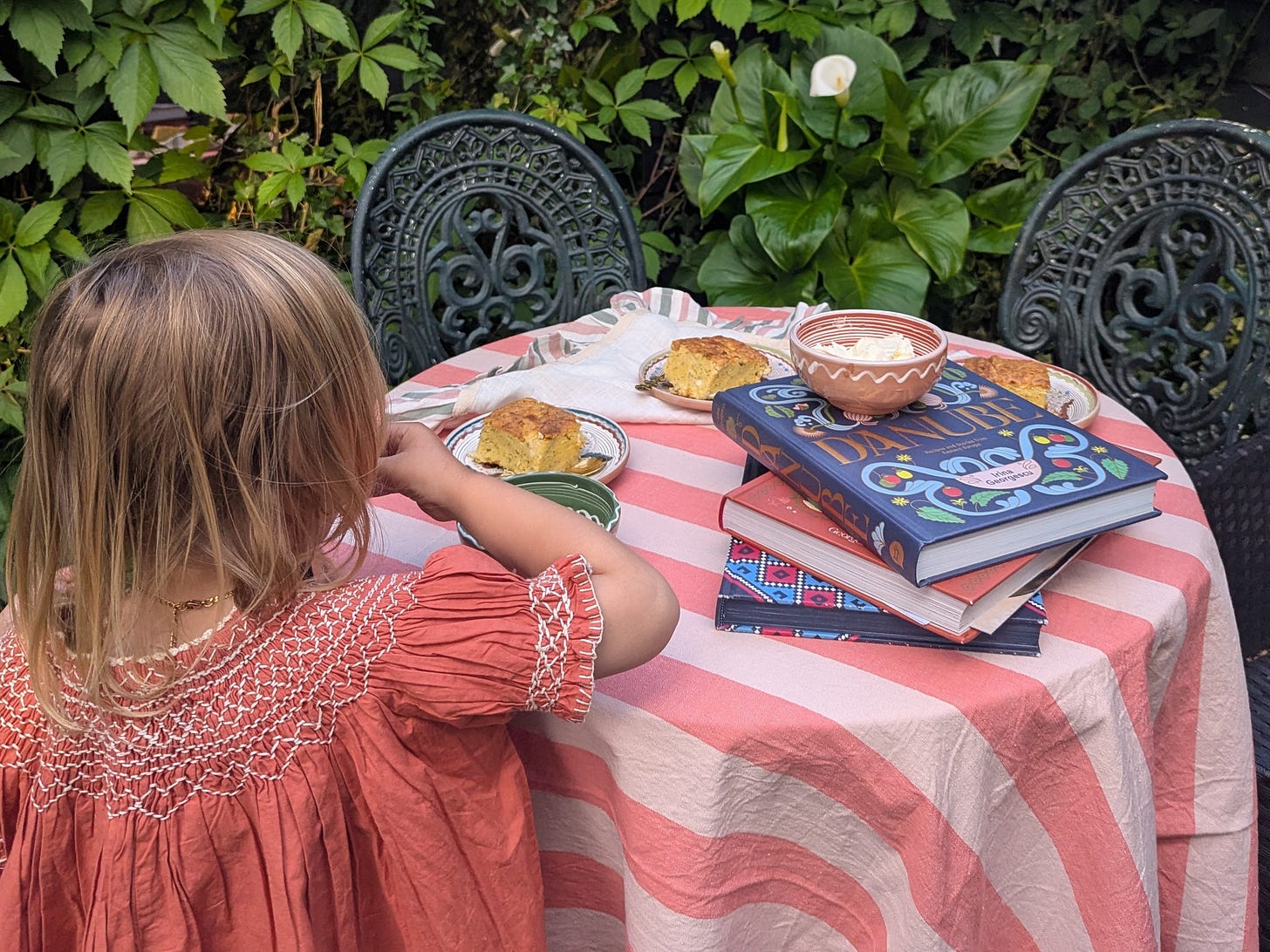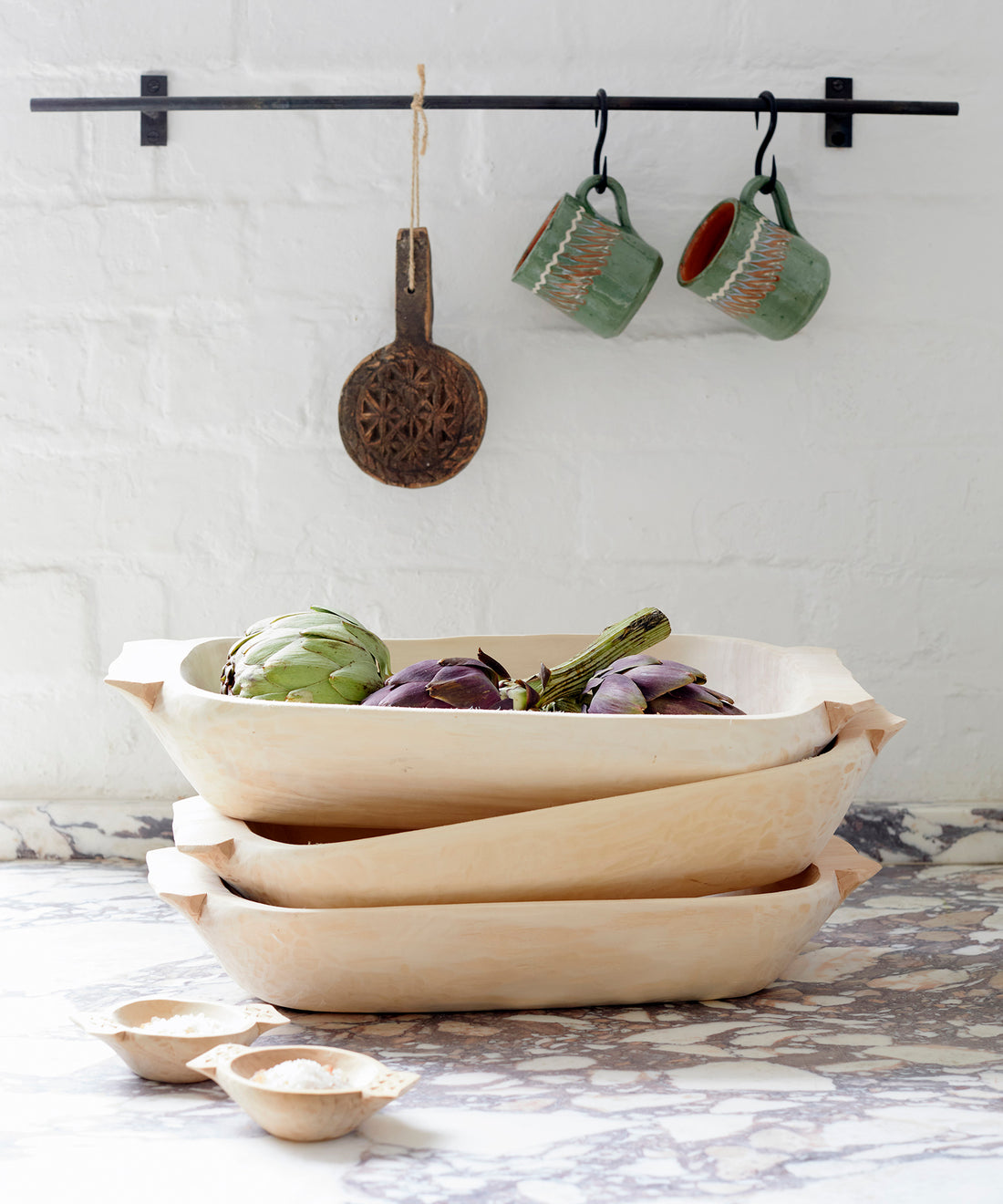It’s a true pleasure—and an honour—to welcome Irina Georgescu to our conversation. A celebrated food writer and passionate advocate for Romanian culinary heritage, Irina joins us to share her love of tradition, memories of growing up in Romania, her latest book, Danube: Recipes and Stories from Eastern Europe, and, of course, some of her favourite dishes.
Her previous works, Carpathia: Food from the Heart of Romania and Tava: Eastern European Baking and Desserts, are cherished staples in our kitchen. Whenever we feel homesick, opening their pages brings an instant sense of comfort, transporting us to childhood moments spent in our grandmother’s kitchen, where the scent of every dish tells a story and evokes treasured memories of family and togetherness.
At Casa De Folklore, we’ve long admired Irina’s evocative storytelling and deep-rooted connection to the culinary traditions of Eastern Europe. With her distinctive voice and thoughtful approach, she invites readers to explore the rhythms of seasonal cooking, the wisdom of inherited recipes, and the rich tapestry of stories passed down through generations.
Irina shares with us not only her personal journey and reflections on Romanian food culture, but also a beloved childhood recipe: Alivenci, a traditional Moldavian cornbread. She also offers a glimpse into her new book, Danube, and tells us more about her culinary tours through Saxon Transylvania—a unique opportunity to experience the region’s food and folklore in an immersive, hands-on way.
Can you share how your upbringing in Romania shaped your relationship with food and storytelling?
The story of my upbringing is deeply connected to how my family prepared food. There was a rhythm in the kitchen that dictated the pace of life at home and of all the activities related to food. This rhythm was tied to seasonality and culinary traditions, the religious calendar and family customs. There was a time for making sour cherry confiture in late June when the fruit was ripe, a time for preparing aubergine spread in August when it was in season to preserve for winter, and a time for buying cabbages in October to ferment in large barrels for making the traditional stuffed cabbage leaves for Christmas known as sarmale. There was a time for chargrilling vegetables for a slow-cooked spread called zacuscă, without which we couldn’t have managed during lean days, and a time for poaching autumn fruit, such as pears and quince, to make a dessert enjoyed by all of us known as compot. You would be mistaken to think that my parents were doing all this while staying at home and living in a large farmhouse with a vegetable garden and an orchard. We lived in a small city apartment, approx 40-50sqm, and my parents had an office job and went to work every day. One important lesson I took away from my childhood and teenage years is that planning ahead and being organised are essential for accomplishing a lot in a day. Organisation is key, and I grasped this early on, applying it in all aspects of my life, whether studying for exams at university, managing projects at work or cooking at home. This was the story of my upbringing and the kitchen rhythms that have influenced how I cook, write and live today.
What led you to pursue food writing as a career, and how did your journey begin?
When I moved to the UK, I was surprised to see how little people knew about Romania. To be fair, one needed a special interest in Eastern Europe to find books about Romania, and there was nothing widely accessible to spark interest in the country—something that could appeal to as many people as possible, even if they had never heard of Romania before. In today’s world, especially in countries like the UK and the US, cookery books fit this description perfectly. What better way to discover and connect with a new culture than by preparing its dishes and breaking bread with its people, even if virtually? Therefore, I decided that a cookery book was the best way to raise awareness about our culinary traditions and, through them, to tell a larger story about our nation. I knew I could cook and write, so I found a literary agent and a publisher, and here I am, 8 years and 3 books later, still talking about Romania.
Can you share a favourite childhood food memory that has influenced your work?
It is hard to choose one example, because I have many childhood memories that have shaped my writing. One of them is about plăcintă, a traditional Romanian pie I loved making with my grandmother. Occasionally, she would roll it like a strudel instead of shaping it into a rectangle, as it was the custom. Together and with great care, we would stretch the pastry thinly over the table, before filling it with apples or curd cheese. Then, lifting one side of the tablecloth, we would allow the pastry to roll down the cloth slope into a perfect strudel. My grandmother didn’t use recipes; everything was done by eye, embracing the ‘cât cuprinde’ philosophy, meaning to adjust ‘as much as it takes’ to make a smooth dough or to get the right consistency of a filling or sauce. Whatever she made, it was about adjusting, testing and adjusting again, never following rules. Ultimately, this childhood food memory instilled in me the confidence to cook by feel and instinct.
You’ve become an advocate for Romanian and East European cuisine and traditions. Did you always see yourself in this role, or was it a natural evolution?
I never intended to become an advocate for Romanian cuisine; my goal was simply to provide those unfamiliar with Romania with a compelling reason to explore our culture. I wanted to make Romanian cuisine more visible in the UK. However, everything is interconnected: food ties to traditions, traditions to history, history to geography, etc. In the end, I found myself discussing them all. What truly matters is the context. While some people may choose to cook a recipe and others may not, everyone can gain valuable insights about Romania just by reading a cookery book. I’m also very active on social media and a writing platform called Substack. It is amazing to see what people value in a story and how they connect with me when they wish to learn more about this part of the world.
Food and traditions are deeply intertwined. Are there particular Romanian rituals or customs around food that hold a special place in your heart?
Easter has always held a special place in my heart, so for my first Easter in the UK, I decided to prepare a traditional Romanian feast specific to this celebration. I dyed boiled eggs red, baked an impressive lamb meatloaf known as drob, made lamb sour soup, called ciorbă, and lamb stew made with the green tops of spring onions known as stufat. I roasted lamb with confit potatoes, served it with a beetroot and horseradish salad, and for dessert, I baked the traditional curd cheese brioche named pască. The meal was a success, sparking numerous discussions among our British guests about Romania’s culinary heritage, which gave me the idea of writing a cookbook.
How do you choose which recipes or stories to feature, given Romania’s rich culinary tapestry?
The books offer a flavour of Romanian cuisine without attempting to be exhaustive collections of recipes. My publisher and I aim to ensure that each recipe is straightforward, uses ingredients found in UK supermarkets, and somehow aligns with Western tastes. These criteria serve as a practical guide since we want readers to engage with these cookbooks actively. I want them to cook the recipes. Fortunately, Romanian cuisine is part of the broader European culinary landscape, so we don’t need to search for rare spices or ingredients. Yet, even something like curd cheese isn't as readily available as it should be, meaning I must look for substitutes. In my first book, 'Carpathia,' I focused on the most iconic Romanian dishes, such as sarmale, stuffed courgettes, and alivenci from Moldavia, even though the recipes involve multiple steps, which might seem complex to some people. In my second book, 'Tava, Eastern European Baking and Desserts,' I chose those ethnic recipes that are easy to prepare and also have a good story. I always aim to ensure that each book includes a good variety of recipes that cater to different expectations and tastes.
Could you tell us more about your latest book, Danube: Recipes and Stories from Eastern Europe? We already have our copy and are eager to embark on this culinary journey with you!
"Danube" is a cookbook that follows the river's journey from its entry in Romania to its mouth at the Black Sea. Serving as a natural border between Romania, Serbia and Bulgaria, the Danube inspired me to explore the cuisines found along its banks in these three countries. Thus, I virtually navigate the river to examine the regions that flank it, focusing on how the locals live and eat along its course. I included a lot of traditional vegetarian dishes challenging the stereotype that Eastern European cuisine is centred around meat. My goal was to demonstrate how people cook at home while also blending flavours I discovered in old cookbooks, even if they are seldom seen in modern cooking. This approach seeks to revive some of the forgotten culinary traditions.
How does your Culinary Tour in Transylvania immerse guests in the region’s food culture and traditions?
The tours in Saxon Transylvania highlight the region's culinary traditions, featuring only traditional food as we explore the villages and visit renowned fortified churches. I’m convinced that there's no better way to understand a culture than by savouring local dishes and connecting with local people. This is exactly what we do: meet producers, stay in local guesthouses, enjoy traditional meals, and participate in cooking demonstrations and interactive cooking classes. People have a great time on these tours and appreciate getting as close to authentic Transylvanian life as possible. Anyone wishing to join us may begin by visiting my website irinageorgescu.com.
Alivenci, Moldavian cornbread
Ingredients
Serves 8
500ml (17fl oz) whole milk
50g (2oz) butter
200g (7oz) cornmeal, polenta
4 medium size eggs
300g (11oz) fresh ricotta or curd cheese
200g (7oz) feta, crumbled or Romanian telemea
250ml (8fl oz) natural yoghurt
50g (2oz) plain flour
1 bunch of dill, finely chopped, plus extra to serve
1 tsp baking powder
Sour cream, to serve
Method:
Bring the milk to a boil in a pan over medium heat. Add the butter and cornmeal/polenta. Stir continuously for a few minutes until thickened, then set aside to cool slightly.
Meanwhile, separate the eggs and place the yolks and whites into separate bowls. Mix the yolks with the ricotta, feta, yoghurt, flour, and dill. Add this mixture to the lukewarm polenta along with the baking powder. Stir to combine well.
Preheat the oven to 200°C/400°F/gas mark 6. Whisk the egg whites until they form firm peaks. Carefully fold the egg whites into the polenta mix. Pour into a greased 28 x 23cm (11 x 9in) baking tray and bake for 40 minutes, or until a skewer comes out clean. Do not remove the polenta from the oven — turn it off but don’t open the door for 20 minutes.
Turn the polenta out onto a chopping board, slice, and serve warm with soured cream and extra dill, either as a starter or a light lunch. In our home, we also love adding a drizzle of honey or maple syrup to transform this dish into a sweet treat for the little ones
Recipe from ‘Carpathia, Food from the Heart of Romania’.
Photo credit: Casa De Folklore


